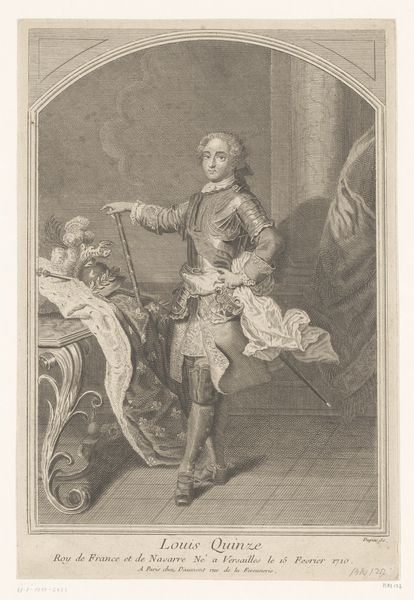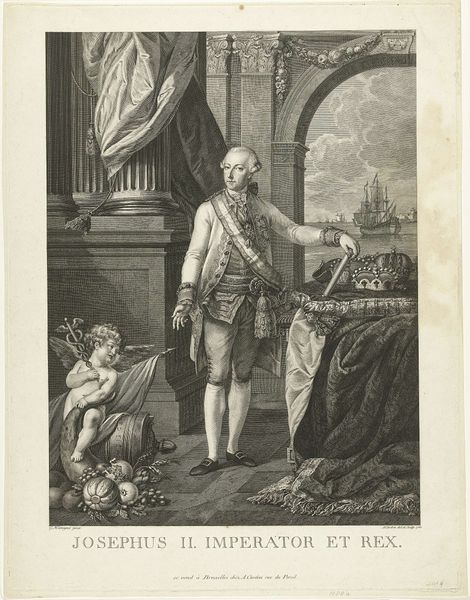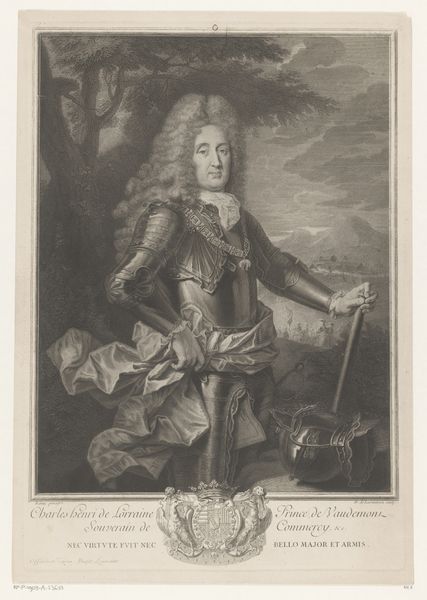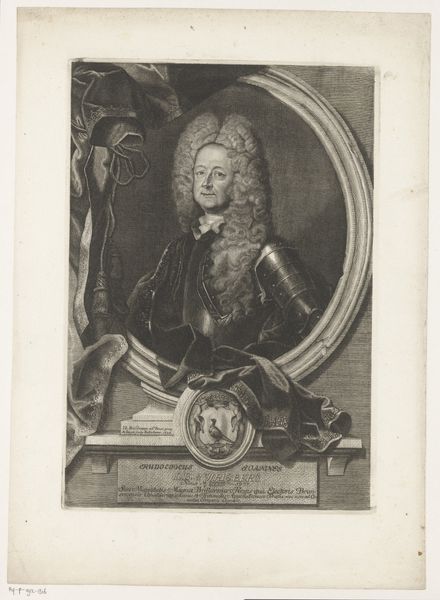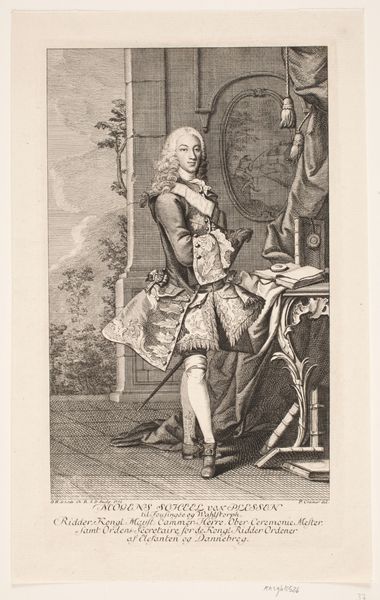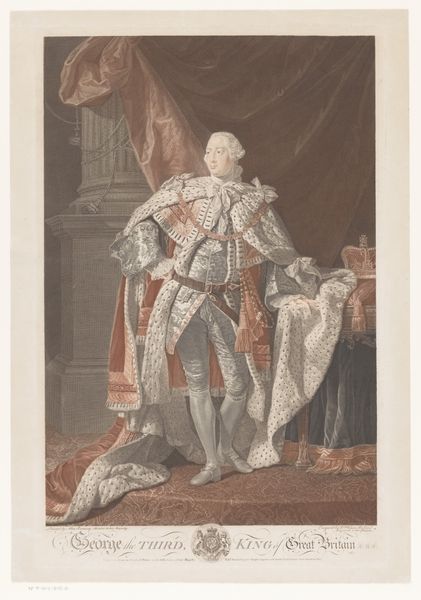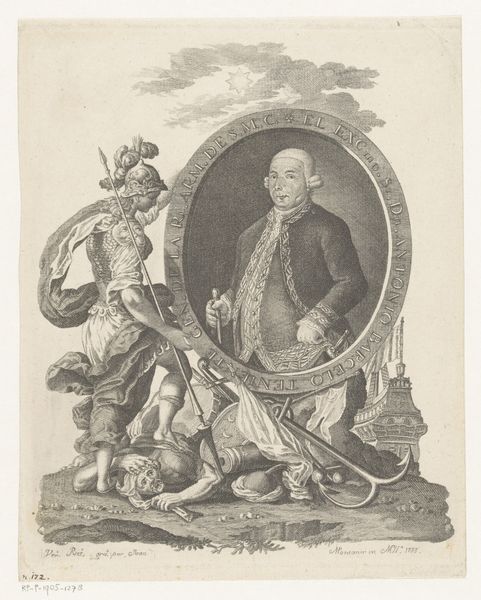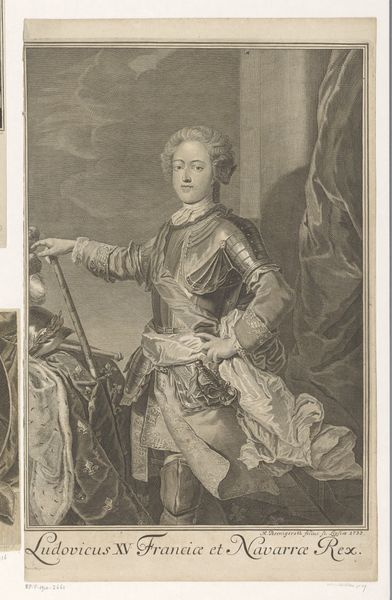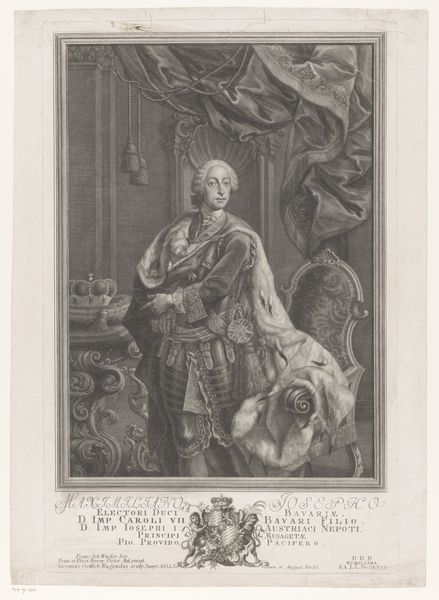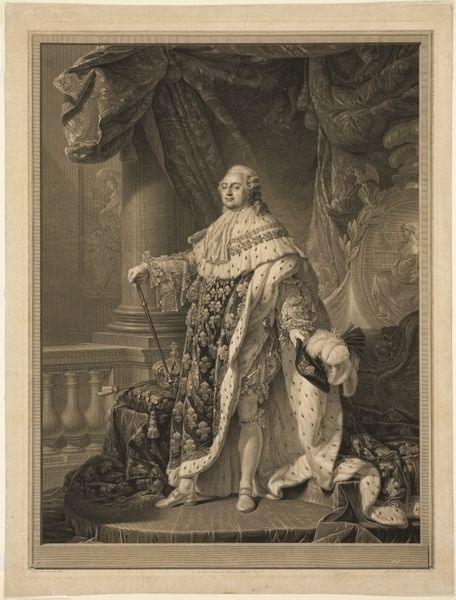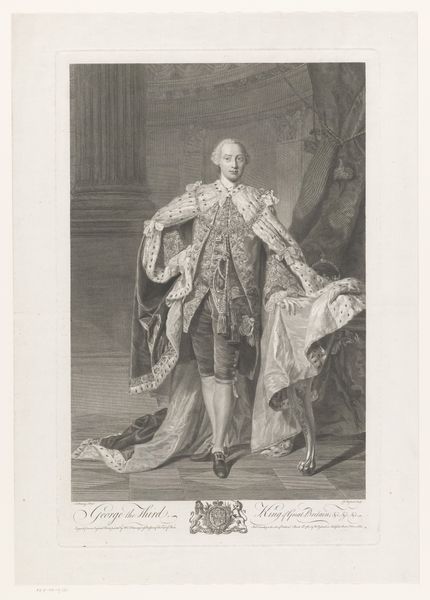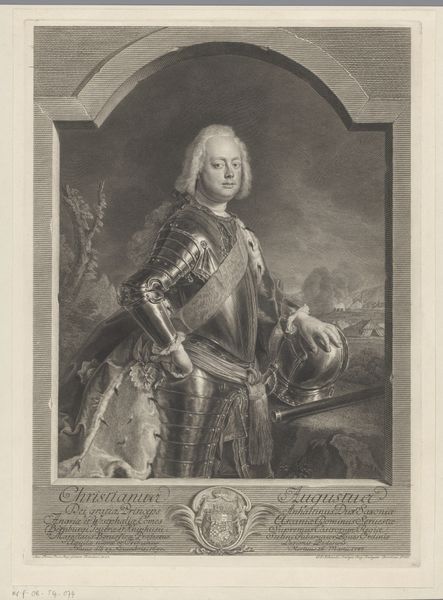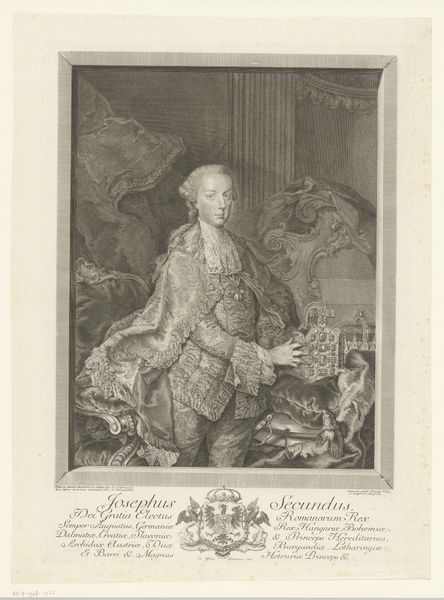
engraving
#
portrait
#
baroque
#
figuration
#
classicism
#
history-painting
#
academic-art
#
engraving
Dimensions: height 491 mm, width 348 mm
Copyright: Rijks Museum: Open Domain
Curator: Look at the incredible detail in this engraving, “Portret van Lodewijk XV” made by Nicolas de Larmessin in 1727. The precision work truly elevates what could have been just a royal portrait into a sophisticated representation of power and class. Editor: Immediately I’m struck by the contrast. A child king dressed for war and surrounded by symbols of wealth...the overtness makes me feel uneasy. What sort of childhood did Louis XV have? Curator: Considering that this is an engraving, a print pulled from an incised plate, the degree of detail suggests a labor-intensive process. Each line, meticulously carved, serves not only to create visual depth and texture, especially in rendering the fabrics and armor, but also symbolizes the immense power required to maintain an opulent kingdom. The labor literally manifests the crown's privilege. Editor: Exactly, and look at that cherub peeking out from behind the table! It is like the artist wanted to underline the manipulation inherent in such displays. Positioning the child king as a powerful figure involves obscuring, or at least aestheticizing, the more troubling aspects of ruling power at such a young age. Curator: It's a careful calculation of visual signifiers. The classical architectural backdrop, the ornate furniture, even the king's pose and expression…all manufactured to exude a particular image of stability and divine right, further entrenched in Academic art practices and Baroque sensibility. Editor: Yes, it brings into sharp relief how identity, particularly that of those in positions of authority, is carefully constructed, consumed, and distributed through images. A piece like this reveals the intersectional elements of monarchy: childhood, class, gender—and how those get wrapped up into legitimizing dynastic power. Curator: In some ways it serves almost as propaganda, shaping perceptions of royalty. The decision to use engraving also is very purposeful in terms of the democratization and wide dispersal of images, a contrast between fine art objects, mass production, and their consumption by various levels of society. Editor: A critical analysis reveals the inherent issues that arise when institutional powers are visualized through selective symbols, as we see here so artfully portrayed. It demands engagement from contemporary art historians who see themselves as integral agents in our historical record. Curator: I agree; by examining the mechanics of the artwork, we can understand how potent an art object can become. Editor: Absolutely, and hopefully we’re empowering listeners to critically look beyond what is on the surface.
Comments
No comments
Be the first to comment and join the conversation on the ultimate creative platform.
